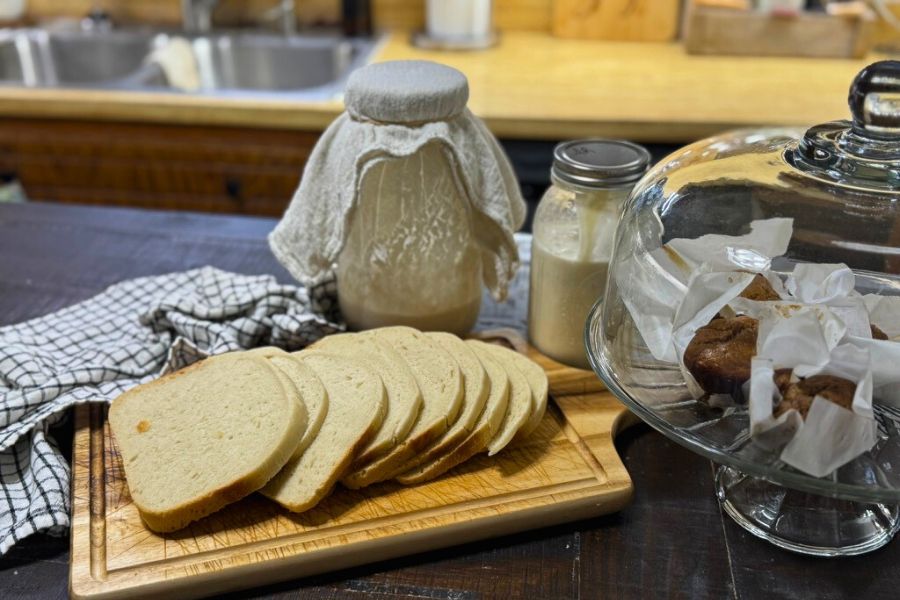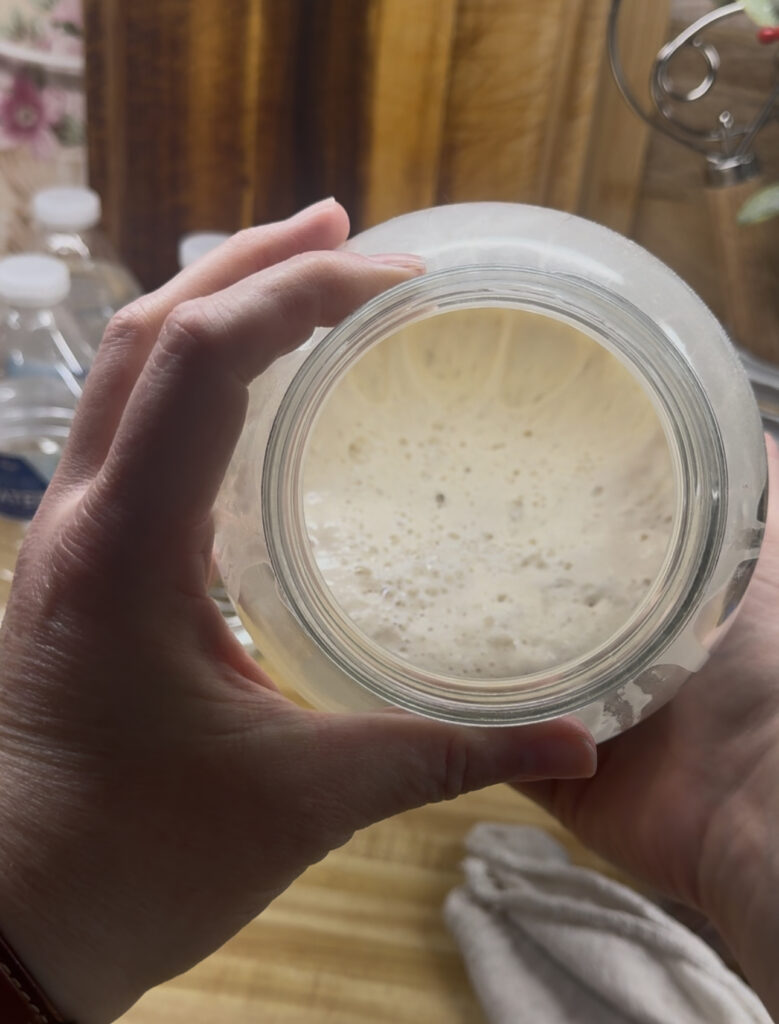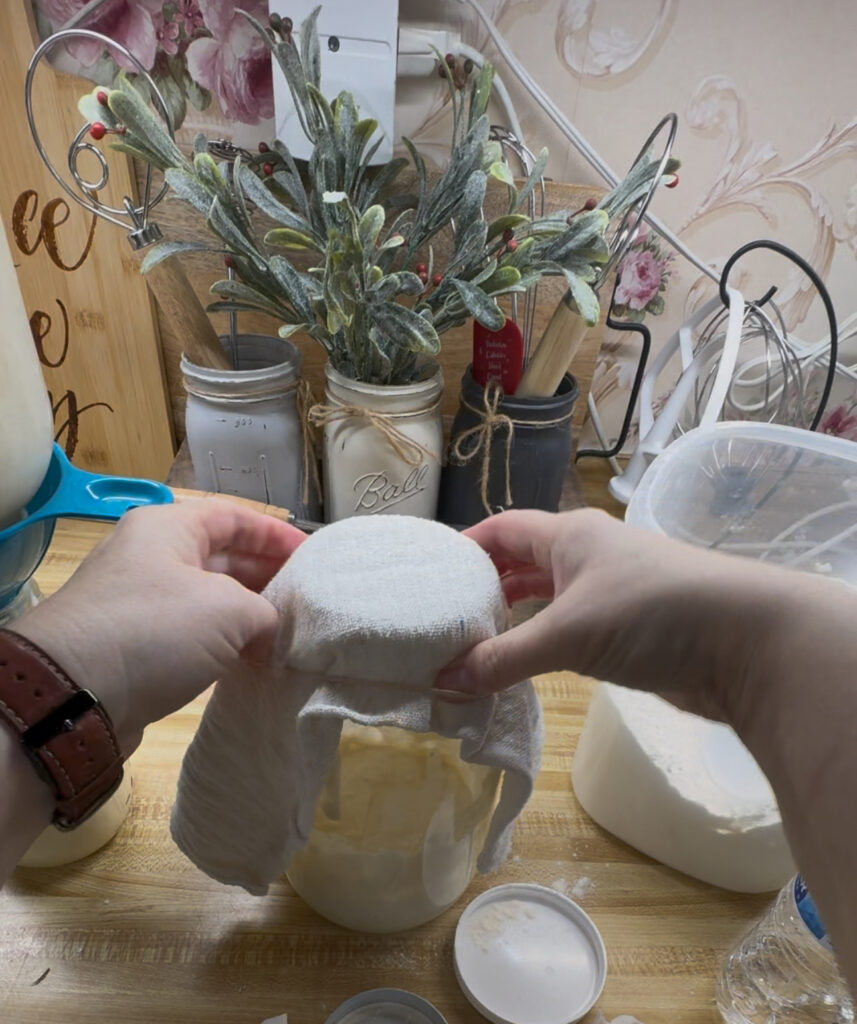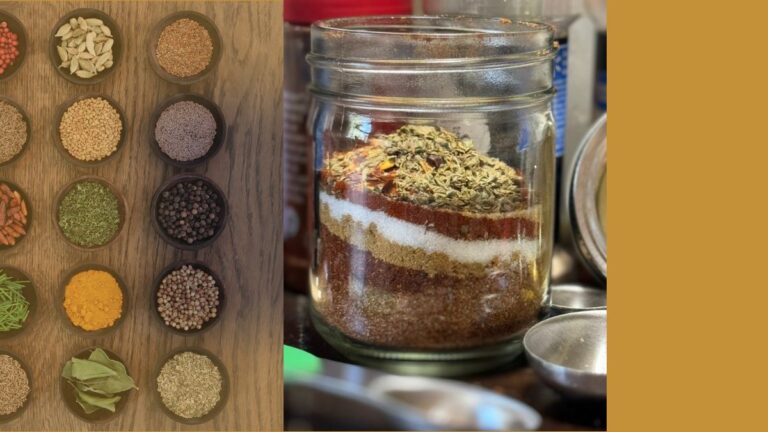Sourdough in Spring: 3 Easy Starter Tips for Busy Homemakers

As the days warm up and the sunlight lingers just a little longer, my sourdough starter starts acting like it’s had a double shot of espresso. If you’ve noticed your bubbly friend growing faster, smelling stronger, or demanding more attention lately—you’re not imagining things. With warmer days ahead, it helps to know how to care for your sourdough starter without wasting flour or feeling overwhelmed.
Spring is here, and your starter knows it.
Don’t worry—you don’t need to toss half of it or start from scratch. These quick reminders will help you keep your starter thriving without wasting time (or flour). And because we homemakers don’t need another high-maintenance relationship, right?

Quick Note: I’m not a sourdough expert, just a homemaker who loves to dabble, simplify, and share what works for my family. If you’re looking for more technical resources or deep dives, I often turn to trusted voices like Farmhouse on Boone and Amy Bakes Bread for inspiration and guidance. This post is simply me sharing what has worked in my own kitchen, especially as we move into warmer days.
1. Spring Feeding Tips for a Happier Sourdough Starter
As temperatures rise, your starter becomes more active—which means it ferments faster. If you’ve been feeding it twice a day in winter, spring might only require once per day or even once every 36–48 hours (especially if it’s stored in the fridge between bakes).
Quick Tip:
If you don’t plan to bake for a few days, pop your starter in the fridge and give it a rest. Just feed it once a week to keep it happy and balanced.

I feed my starter with unbleached all-purpose flour—simple and reliable. When I bake, though, I like to use a mix of half unbleached all-purpose and half fresh-milled flour in most recipes. My family prefers the flavor and texture this brings, and I love using my NutriMill grain mill to grind fresh flour for that purpose. It adds extra nutrition and a wholesome depth of flavor without overpowering the final bake.
(If you’re looking to purchase one, you can use my code MAKINMACON20 for $20 off—just my way of sharing what I love!)
2. Sourdough Discard Ideas for Spring Cooking
Instead of throwing away your discard, turn it into something useful and delicious. My go-to this time of year?
- Pancakes or waffles (recipe coming soon!)
- Crackers for a snack board (crispy cheese crackers recipe)
- Tortillas for taco night (sourdough tortillas)
- Sweet treats like berry cobbler or citrus berry blossoms
- Sourdough Dutch Baby — a great way to use discard and fresh eggs if your hens are suddenly overachieving
I’ve written more in-depth about discard before, so if you’re looking for even more creative or thoughtful ways to use it (including some from other sourdough bloggers I love), be sure to check out:
- Creative & Healthy Ways to Use Sourdough Discard
- The Secret Gold in Your Kitchen: Amazing Uses for Sourdough Discard
3. How to Store Your Sourdough Starter in Warmer Weather
As your kitchen warms up, place your starter in a cooler, darker area if it’s fermenting too quickly. A shady corner or inside a cabinet can slow things down just enough.
Homemaker Hack:
Use a rubber band (or even a permanent marker) to mark your starter’s level after feeding—it helps track how fast it’s rising and whether it’s time to adjust your schedule.—it helps track how fast it’s rising and whether it’s time to adjust your schedule.

Common Questions About Spring Sourdough Starters
Why is my sourdough starter so runny in the spring?
This is one of the most common issues I hear! Warmer temperatures speed up fermentation, which can cause your starter to over-ferment and break down faster. That leads to a runnier texture. To avoid this, feed your starter more frequently or store it in the fridge between uses.
Do I need to change how much I feed my starter in the spring?
This depends entirely on your kitchen and schedule. Personally, I don’t stick to a ratio—I feed it based on what I plan to bake. If I know I’ll need more, I feed more (typically 1/4 to 1 cup of flour) and add just enough water to create a thick pancake batter consistency. Spring may mean feeding smaller amounts more often or simply watching closely and adjusting as needed.
What should I do if my starter smells off?
A more sour smell is normal as fermentation speeds up, but if it smells putrid or like gym socks, it might need a few good feedings with fresh flour to balance things back out.
A Note from My Kitchen
One of the things I love most about sourdough is how it teaches us to pay attention—to rhythms, to seasons, and to the little things. This time of year, my kitchen feels more alive. Friends from church are sharing their eggs, the sun is pouring in, and my starter is happily bubbling away on the counter. I’ve learned that sourdough isn’t just about bread—it’s about embracing the gentle rhythms God builds into our days. It reminds me to slow down, to nurture, to delight in simple things—and that’s a kind of homemaking that brings both peace and purpose.
If you’re in a busy season, let your starter serve you, not stress you. Adjust, simplify, and enjoy what it brings to your table. These spring sourdough starter tips are simply tools to help you do just that.
Want more from-scratch encouragement in your inbox?
Join my weekly Stay Rooted email for grace-filled notes on faith, homemaking, and finding peace in the chaos.
It’s like a hug in your inbox—with a side of sourdough.
Bonus Freebie: Download my Spring Sourdough Feeding Schedule to keep your starter healthy as the seasons change! Perfect for beginners and long-time bakers alike.

Disclosure: This post contains affiliate links, which means I may earn a commission at no extra cost to you if you make a purchase through these links. Thank you for supporting my content!






